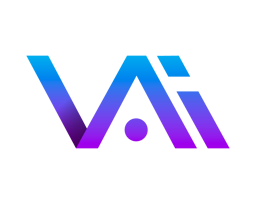Understanding Generative AI
Josh Sinnott • 2023-09-28
Understanding Generative AI
Understanding Generative AI
In the ever-evolving landscape of technology, the legal profession is not immune to the impact of artificial intelligence (AI). One significant development in AI that attorneys should be aware of is Generative AI. This groundbreaking technology is transforming various industries, including the legal field. In this post, we'll delve into the basics of what Generative AI is and what it does, offering attorneys valuable insights into this transformative technology.
What is Generative AI?
Generative AI, short for Generative Artificial Intelligence, is a subset of artificial intelligence that focuses on enabling machines to generate content that appears to be created by humans. Unlike traditional AI, which is often used for specific tasks, Generative AI is designed to produce original, human-like output, such as text, images, and even music. It does so by learning from vast amounts of data and using that knowledge to create new, contextually relevant content.
Key Components of Generative AI
Neural Networks: At the heart of Generative AI are neural networks, which are designed to mimic the human brain's structure and function. These networks consist of interconnected nodes that process information, learn from data, and generate output.
Training Data: Generative AI models require large datasets to learn patterns and generate content. For example, text-based models may be trained on extensive collections of written text, while image generators require vast image libraries.
Architectures: Different Generative AI models employ various architectures, each suited to specific tasks. For example, GPT (Generative Pretrained Transformer) models are widely used for natural language processing, while Generative Adversarial Networks (GANs) are used for generating images.
How Generative AI Works
Generative AI operates through a process of learning and prediction. Here's a simplified overview:
Training: The AI model is exposed to massive datasets to learn patterns, styles, and context from the data.
Generating Content: After learning from the training data, the model can generate content based on the patterns it has identified. For instance, a Generative AI model trained on legal texts might produce coherent legal documents or summaries.
Fine-Tuning: In many cases, models are fine-tuned on specific tasks or domains to enhance their performance in generating content relevant to those areas.
Applications in the Legal Field
Generative AI holds immense potential in the legal profession:
Automated Document Generation: AI-powered tools can help to generate legal documents, contracts, and briefs quickly and accurately, saving attorneys time and reducing the risk of errors. That said these documents should always be reviewed by the practicing attorney before submission.
Legal Research: Generative AI can assist in legal research by summarizing cases, analyzing precedents, and providing concise legal opinions. All of this can be done from Gen. Our content is updated regularly and so you can be sure you are citing the most updated information.
Predictive Analysis: AI can analyze historical case data to predict case outcomes and provide insights into legal strategies. Gen can also help with Ethics issues thanks to the ethics manuals included in it.
Generative AI is a transformative technology with a wide range of applications in the legal field. Understanding its basics is crucial for attorneys looking to leverage AI to streamline their practice, improve efficiency, and deliver better results for their clients. As Generative AI continues to evolve, attorneys who stay informed and embrace this technology stand to gain a significant advantage in the ever-competitive legal landscape. That’s why Gen is here to help!
See More Posts
Copyright © 2025 Visalaw Ventures, LLC. All rights reserved.
